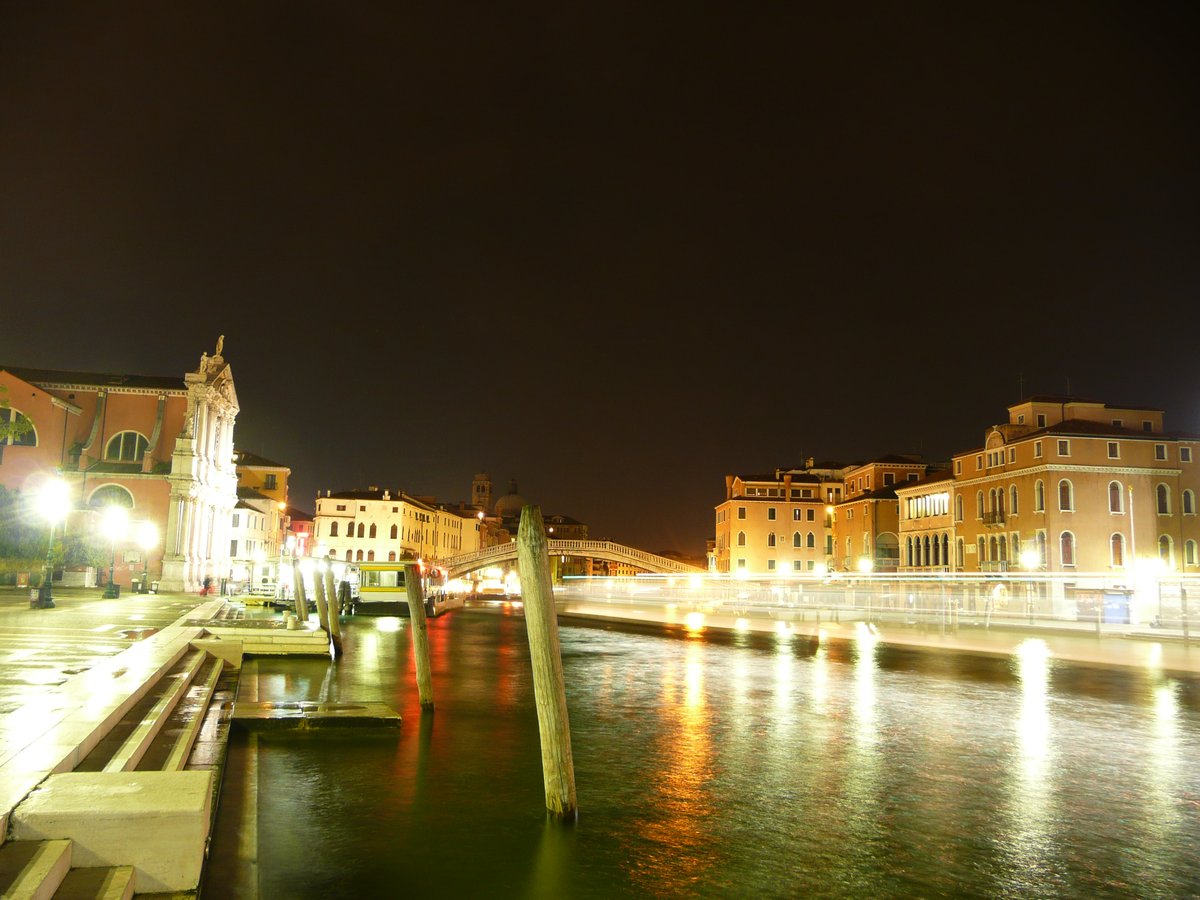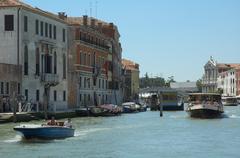
Santa Maria degli Scalzi Venice: Hours, Tickets, History & Visitor Guide
Date: 14/06/2025
Introduction
Santa Maria degli Scalzi—also known as the Church of the Scalzi or Santa Maria di Nazareth—is a magnificent Baroque church located in Venice’s Cannaregio district, directly across from the Santa Lucia railway station. Founded by the Discalced Carmelites in the 17th century, this church stands as a symbol of humility, spiritual devotion, and Venetian artistic achievement. With its iconic Carrara marble façade, rich interior decoration, and ongoing role as a place of worship, Santa Maria degli Scalzi invites visitors to explore a profound blend of history, art, and contemplation. (Wikipedia: Scalzi, Venice) (Venice Tourism) (Chiesa degli Scalzi Official) (Meeting Venice)
Table of Contents
- Introduction
- Historical Overview
- Architecture & Artistic Highlights
- Visiting Information
- What to See Inside
- Giardino Mistico (Mystical Garden)
- Nearby Attractions
- FAQs
- Travel Tips
- Summary & Conclusion
- References & External Links
Historical Overview
Founding and Religious Significance
Santa Maria degli Scalzi was established in the early 1600s by the Discalced Carmelites, an order whose name—“Scalzi”—means “barefoot” and reflects their vow of poverty and humility. The church is dedicated to Santa Maria di Nazareth, underscoring the Carmelites’ deep Marian devotion. Its location near the city’s main railway station has made it both a spiritual gateway to Venice and a hub for travelers and locals alike.
Construction and Baroque Flourishes
Renowned architect Baldassarre Longhena began the design, envisioning a single-nave plan with grand side chapels. The spectacular façade, featuring Carrara marble and dynamic Baroque statuary, was completed between 1672 and 1680 by Giuseppe Sardi, with patronage from Venetian aristocrat Gerolamo Cavazza. The church was consecrated in 1705, and over the centuries, it has been enriched with chapels and artworks by some of Venice’s leading Baroque artists. (it.wikipedia: Chiesa di Santa Maria di Nazareth (Venezia))
Architecture & Artistic Highlights
Exterior: Baroque Façade
The church boasts Venice’s only Carrara marble façade, a masterpiece by Giuseppe Sardi. Two main orders of columns, lavish scrollwork, and statuary—including figures of Faith and Hope by Bernardo Falconi—create a dramatic effect that draws the eye upward. The central portal is crowned with the Carmelite coat of arms, and the overall effect is theatrical and uplifting, in line with Baroque ideals. (Venice Civic Museums)
Interior: Nave, Chapels, and Dome
Inside, the single nave stretches about 50 meters, flanked by richly decorated side chapels dedicated to various saints and Venetian families. The high, barrel-vaulted ceiling, supported by robust pilasters, enhances both light and acoustics, fostering a sense of awe.
Chapels & Artistic Treasures
- Mora Chapel: Features a Carrara marble statue of St. John the Baptist by Melchior Barthel.
- Manin Chapel: Final resting place of Ludovico Manin, the last Doge of Venice, with distinctive blue Murano glass chandeliers.
- Venier Chapel: Houses a statue of St. Sebastian by Bernardo Falconi.
- Chapel of St. Teresa: Lavishly decorated with marble inlay and gilded stucco, it contains relics of St. Teresa and a marble sculpture by Tommaso Rues.
Ceiling Frescoes
The nave’s ceiling once displayed Giambattista Tiepolo’s monumental fresco “The Translation of the House of Loreto” (1743–44), destroyed during WWI but preserved in fragments. Ettore Tito later replaced it with a 20th-century fresco. (Google Arts & Culture) (Venice Insider)
Sculptures and Altars
The high altar, designed by Giuseppe Pozzo, features Solomonic columns, gilded angels, and a central altarpiece of the Virgin Mary. The church’s sculptural program, with works by Falconi and Rues, blurs the boundaries between architecture and art, using light and polychrome marble to dramatic effect.
Visiting Information
Hours & Tickets
- Open Daily: 7:00 am – 1:00 pm, 2:30 pm – 6:45 pm (closed 1:00 pm–2:30 pm)
- Admission: Free. Donations are welcomed to support ongoing restoration. No tickets required.
- Guided Tours: Available by prior arrangement for individuals or groups; contact the church or Giardino Mistico for details. (Chiesa degli Scalzi Official) (Meeting Venice)
Mass Times & Visitor Etiquette
- Weekdays: 7:30 am, 8:30 am, 6:00 pm
- Sundays/Feast Days: 8:00 am, 9:30 am, 11:00 am, 6:00 pm
- Dress Code: Modest attire required (shoulders and knees covered); hats off inside.
- Photography: Permitted for personal use without flash or tripods; restricted during services.
Accessibility & Facilities
- Wheelchair Access: Main entrance is street level; most of the nave is accessible, though some chapels and the Giardino Mistico may require assistance.
- Restrooms: Not available inside; use Santa Lucia station nearby.
- Gift Shop: Sells religious items and products crafted by Carmelites; open Tuesday–Sunday (closed Mondays).
- Quiet Spaces: The Giardino Mistico offers tranquil respite; visits by appointment. (Giardino Mistico)
What to See Inside
- Façade: The city’s only Carrara marble church front, with vivid Baroque sculpture.
- Chapels: Each features elaborate altars, tombs, and family dedications, notably the Manin and Venier chapels.
- Altar & Dome: Baroque splendor with gilded angels and polychrome marbles.
- Ceiling Frescoes: View preserved fragments of Tiepolo’s lost masterpiece and the 20th-century replacement.
- Murano Glass Chandeliers: Especially notable in the Manin Chapel, exemplifying Venetian glass artistry.
Giardino Mistico (Mystical Garden)
Restored in 2015, the Giardino Mistico behind the church is a unique botanical oasis preserving Venetian monastic gardening traditions and native plants. Visits are by appointment and highlight both spiritual and herbal heritage. To book, email [email protected] or [email protected]. (Giardino Mistico)
Nearby Attractions
- Ponte degli Scalzi: Historic bridge with scenic Grand Canal views. (Audiala)
- Jewish Ghetto: Explore the heart of Venetian Jewish history in Cannaregio.
- Ca’ d’Oro: Renowned Gothic palace and art gallery.
- Santa Lucia Station: Main train hub with traveler amenities.
Frequently Asked Questions (FAQ)
Q: Are tickets required to visit Santa Maria degli Scalzi?
A: No, entry is free. Donations are appreciated.
Q: What are the official opening hours?
A: 7:00 am–1:00 pm and 2:30 pm–6:45 pm daily, with a midday closure.
Q: Is the church wheelchair accessible?
A: The main entrance and most of the nave are accessible; some areas may require assistance.
Q: Can I take photographs?
A: Yes, for personal use (no flash or tripods). Professional shoots require permission.
Q: Are guided tours available?
A: Yes, by prior arrangement via the church or Giardino Mistico.
Q: Is the Giardino Mistico open to visitors?
A: Yes, by appointment only.
Travel Tips
- Visit early morning or late afternoon for a quieter atmosphere.
- Wear comfortable walking shoes for Venice’s bridges and cobblestones.
- Check mass times if you wish to attend a service.
- Respect the church’s sacred nature and visitor guidelines.
- For group visits or tours, book in advance, especially during peak season.
Summary & Conclusion
Santa Maria degli Scalzi is a compelling emblem of Venice’s Baroque artistry and Carmelite spirituality. With its accessible location, free admission, and wealth of architectural and artistic treasures, the church is an essential stop for any visitor. Enhance your experience by exploring the serene Giardino Mistico and nearby Cannaregio landmarks. For the latest information, guided tours, and interactive visitor tools, consider using the Audiala app and following official Venice tourism resources.
References & External Links
- Wikipedia: Scalzi, Venice
- Venice Tourism
- Chiesa degli Scalzi Official
- Meeting Venice
- Giardino Mistico
- Audiala
- isharethese.com
- Venice Insider
- Venice Civic Museums
- Google Arts & Culture
- Lions in the Piazza
- Venice Travel Guide













































































































